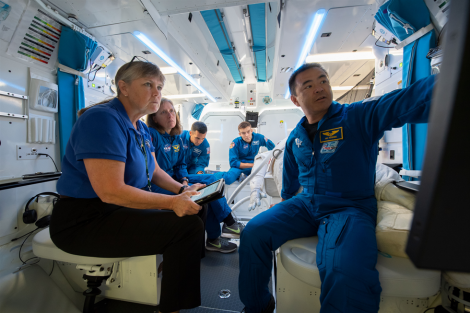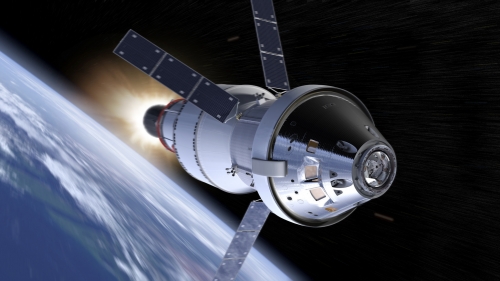NASA wants back on the moon. While the agency has enjoyed success with the International Space Station and Mars rovers, no astronaut has set foot on the moon since Apollo 17 in 1972. Now, acting under the mandate established by Space Policy Directive 1 and signed by President Donald Trump on Dec. 11, 2017, the agency is charged with creating a human presence on the moon. NASA has embarked on several programs to achieve that goal, and The Aerospace Corporation is closely involved with several projects crucial to returning humans to the moon.
The center of NASA’s lunar plan is called the Gateway, which will be a small space station that would orbit the moon and serve as a staging platform for trips to the moon’s surface. Aerospace engineers are closely involved with the overall design as well as systems engineering and integration of the various modules that will comprise the Gateway.

Part of that integration includes designing and testing the living quarters, or habitation module, for the Gateway. Aerospace employees are part of the NASA Gateway Ground Test Team, which has been tasked with evaluating five habitation module mockups built by various contractors — Northrop Grumman, Boeing, Lockheed Martin, Sierra Nevada Corporation, and Bigelow Aerospace. A sixth firm, Nanoracks, has proposed a habitation concept. Aerospace employees are participating as ground test experts, subject matter experts, and engineering test subjects to accomplish these evaluations. Astronauts and engineers will work in each of the mockups, performing activities that simulate three days of astronaut crewmembers living and working aboard the Gateway.
“The results of those ground tests will be provided to NASA program management to help them understand what capabilities we need to build into our hab module to make it safe, comfortable, efficient, and productive for our crews,” said Jason Poffenberger, engineering specialist with the Aerospace Human Exploration and Spaceflight Division at the Johnson Space Center.

Aerospace engineers are also involved in the development of the Orion capsule, which will transport astronauts to the Gateway. On the Orion space capsule, which will be attached to NASA’s Space Launch System rocket, Aerospace has taken a key role in designing and testing the avionics, which includes data handling subsystems, interfaces with other parts of the capsule, flight software, power, and wiring. Aerospace engineers work closely with Lockheed Martin on all aspects of the Orion avionics.
As NASA firms up its plans for returning to the moon and going beyond, Aerospace will be ready to assist with its expertise gained from nearly 60 years of innovative and ground-breaking science and engineering.

